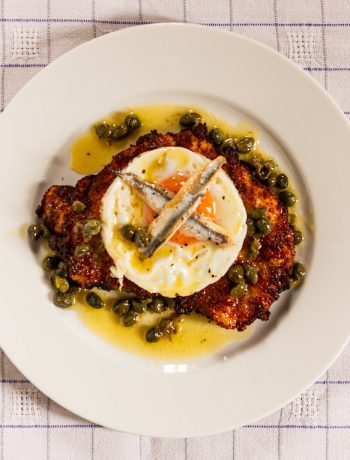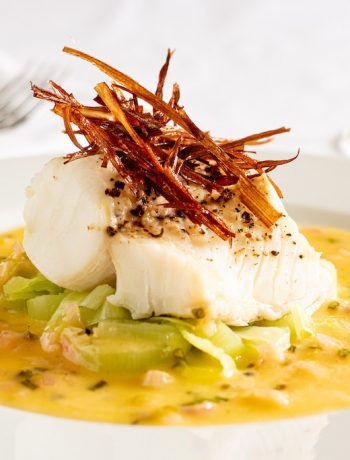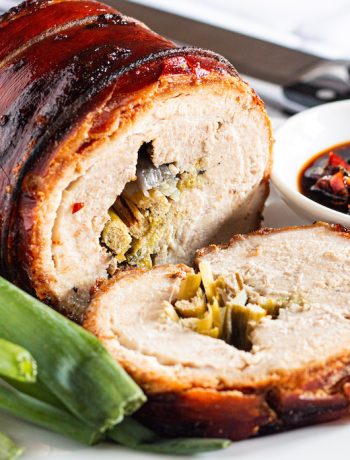For me, lasagne spent many years disregarded as naff simply because cartoonist Jim Davis decided it was the favourite food of work-shy, ginger, feline glutton Garfield. That cat irritated me so intensely, that the word ‘lasagne’ would invoke an inward eye roll and a desire to go and eat anything that was not lasagne.
The lasagne dish described on this page is the classic lasagne al forno that has exported itself from Emilia-Romagna to the rest of the world – chiefly the USA. Among all lasagnes, the al forno version, which layers ragú alla Bolognese with béchamel and pasta verde, is the richest, tastiest variant, and it lends itself very well to Italian restaurant menus because the main sauce element that takes all the time is also in the tagliatelle alla Bolognese, it is rolled up into meatballs, and it is also in the kid’s ravioli dish.
But, of course, lasagne was not invented in Emilia-Romagna, and some writers don’t even think it is Italian – there is even an invention story from the court of King Richard II of England. And even if it is Italian, the version we tend to enjoy today cannot be that old because nobody cooked a tomato in Italy until 1692.
The lasagne oldest recipe occurring in Italy comes from Naples where it is recorded in Liber de Coquina – a cookbook surviving from the 14th Century. The recipe for lasagne in that book bears almost no resemblance to a modern version. The recipe is written as follows:
De lasanis: ad lasanas, accipe pastam fermentatam et fac tortellum
ita tenuem sicut poteris. Deinde, diuide eum per partes quadratas
ad quantitatem trium digitorum. Postea, habeas aquam bullientem salsatam, et pone ibi ad coquendum predictas lasanas. Et quando erunt fortiter decocte, accipe caseum grattatum.
This translates to sticking a topping on top of fermented bread and eating it with a small stick.
The Neapolitans gradually altered their recipe until they reached the modern standard of layered pasta, sausage, meatballs, mozzarella, ricotta and hard-boiled eggs. Tomatoes were added much later as they took some time to make it to Europe from Chile, and almost as long again before anyone realised they were food. From there, the people of Emilia-Romagna, with access to abundant dairy produce from the pastures around Bologna, created the lasagne al forno we all secretly love.
To make a good lasagne al forno, the basic principle is to look at each element (sauce, pasta and béchamel) and bring your A game to every single one of them. With that in mind, we use our trusty Bolognese recipe for the sauce, we make a béchamel as normal, but take some time to infuse the milk with some spices, and we make fresh pasta verde because the green colour adds a lot to the final look of the dish, and Anna del Conte (who is worth listening too) tells us in Gastronomy of Italy that the green pasta is historically correct.
Lasagne al forno
Ingredients
- For the Bolognese sauce:
- 200g minced beef steak
- 200g minced pork
- 150g pancetta, diced (or bacon lardons)
- 1 large carrot, diced finely
- 2 celery stalks, split and diced finely
- 1 medium onion, diced finely
- 1 garlic clove, minced
- 400g can of chopped plum tomatoes
- 4 tbsp tomato purée
- 200ml beef stock
- 1 fresh bay leaf, torn once
- Pinch of sugar
- Salt and freshly ground black pepper
- For the pasta:
- Olive oil
- 100g spinach
- 2 eggs
- 200g pasta flour (you may need more or less depending on the spinach)
- For the béchamel sauce:
- 30g flour
- 30g butter
- 500ml milk
- 1 onion, halved and studded with 12 cloves
- 2 bay leaves
- A small piece of mace
- Whole nutmeg
- For the assembly:
- 50g butter
- 10g parmesan grated
- Salt and freshly ground black pepper
Instructions
To make the Bolognese sauce:
Place the pancetta in a cold saucepan, and melt the fat in (I use a Le Creuset cast iron casserole). Add the vegetables and stew gently until softened (add some olive oil if everything is a bit dry). Add the garlic, and cook for 1 minute. Add the meat and leave on the stove, stirring constantly, until lightly browned. Add the tomatoes, can juice, purée, stock, sugar and bay, and simmer for at least 1 hour, adjusting the seasoning as you go. At this point, letting the sauce cool with a lid on it for a while is always going to be good. Like any casserole it's better the next day.
To make the béchamel:
Start by warming the milk with the onion, bay and mace. Leave to cool and infuse. Melt the butter, add the flour and cook for a minute or so. Start slowly adding the milk but by bit without boiling until all the milk is used, and the sauce is thick and creamy. Season and grate in a little nutmeg. You can set the sauce aside without a skin forming if you cover the surface of the sauce with some cling wrap.
To make the pasta:
Wilt the spinach in a large pan with some olive oil. Drain the spinach and squeeze out as much liquid as you can by wrapping it in a clean tea towel and twisting. Blitz the spinach with the eggs in a blender and pass through a sieve, discarding any fibrous waste. Measure the flour into a bowl. Tip the bowl out onto your surface and use the bottom of the bowl to create a well in the flour. Pour the egg mixture into the well and use a dough cutter to gradually chop and work in the eggs to the flour. Once the mixture is gaining nothing from the cutter, use your hands to knead the pasta to the point where a poked finger results in the sprung back pasta ball over less than 10 seconds. Wrap the pasta ball in clingfilm and chill for 20 mins.
To assemble:
Set an oven to 220˚C.
With everything ready, use a pasta machine to roll the pasta out into fairly thin sheets. Butter an oven-proof gratin dish, and start layering the lasagne. The layers go Bolognese, pasta, Bolognese (wee bit), parmesan, béchamel, Bolognese, pasta, Bolognese (wee bit), parmesan, béchamel. Always finish with the béchamel.
Bake in the oven for 20 mins until golden on top.
Notes
Domestic cooks would do well to make the Bolognese one evening to have with tagliatelle, and then freeze or chill the leftovers to make a lasagne later in the same week.




 (3 votes, average: 3.33 out of 5)
(3 votes, average: 3.33 out of 5)


No Comments